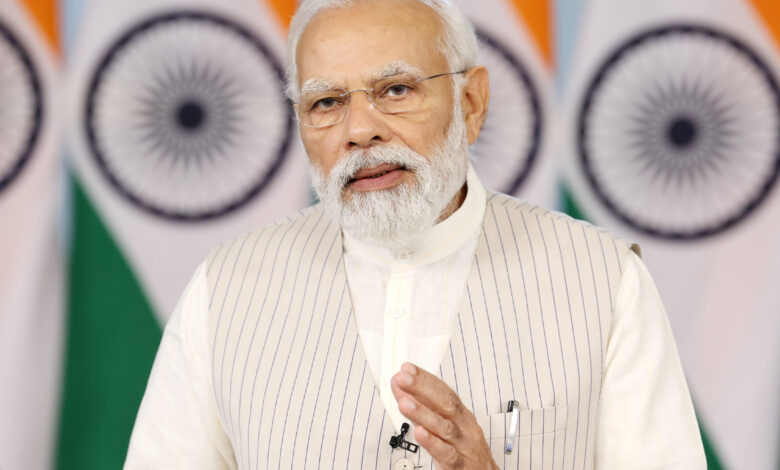Cabinet Greenlights Ambitious eCourts Phase III Project with a Rs. 7,210 Crore Budget

In a significant move towards bolstering access to justice through technology, the Union Cabinet, led by Prime Minister Narendra Modi, has given its nod to the eCourts Project Phase III. This monumental initiative, designed as a Central Sector Scheme, will span four years from 2023 onwards and boasts a substantial financial outlay of Rs. 7,210 crore.
Aligned with the vision of “Sabka Sath, Sabka Vikas, and Sabka Vishwas” championed by Prime Minister Narendra Modi, the eCourts Mission Mode Project stands as a pivotal driver for enhancing the accessibility of justice services through cutting-edge technology. Part of the National eGovernance Plan, the e-Courts Project has been in motion since 2007, focusing on the ICT enablement of the Indian Judiciary. With Phase II successfully concluded in 2023, Phase III is firmly rooted in the principles of “access and inclusion.”
Building upon the achievements of Phase I and Phase II, e-Courts Phase III aims to revolutionize the delivery of justice by transitioning towards digital, online, and paperless court operations. This transformation involves the digitization of the entire court records, including historical records, and the widespread adoption of e-Filing and e-Payments through the establishment of e-Sewa Kendras in all court complexes. The project also envisages the implementation of intelligent smart systems to facilitate data-driven decision-making for judges and court registries when scheduling and prioritizing cases.
The primary objective of Phase III is to establish a unified technology platform for the judiciary, creating a seamless and paperless interface between the courts, litigants, and other stakeholders. This monumental step will not only enhance the efficiency and transparency of judicial proceedings but also promote the principle of “ease of justice” for all.
The Centrally Sponsored Scheme for eCourts Phase III is a collaborative effort between the Department of Justice, Ministry of Law & Justice, Government of India, and the eCommittee of the Supreme Court of India. Implementation will take place in a decentralized manner through the respective High Courts, aiming to develop a judicial system that is more accessible, affordable, reliable, predictable, and transparent for all stakeholders.
The approval of eCourts Phase III underscores the government’s commitment to modernizing the Indian judicial system and ensuring that justice is not only blind but also technologically empowered, providing a fair and efficient platform for all citizens.
Components of eCourts Phase III are as follows:
| S.No. | Scheme Component | Cost Estimate (Total in Rs. crore) | ||
| 1 | Scanning, Digitization and Digital Preservation of Case Records | 2038.40 | ||
| 2 | Cloud Infrastructure | 1205.23 | ||
| 3 | Additional hardware to existing courts | 643.66 | ||
| 4 | Infrastructure in newly set up courts | 426.25 | ||
| 5 | Establishment of 1150 Virtual Courts | 413.08 | ||
|
6
|
4400 fully functional eSewa Kendra | 394.48 | ||
| 7 | Paperless Court | 359.20 | ||
| 8 | System and Application Software Development | 243.52 | ||
| 9 | Solar Power Backup | 229.50 | ||
| 10 | Video Conferencing set-up | 228.48 | ||
| 11 | e- filing | 215.97 | ||
| 12 | Connectivity (Primary + Redundancy) | 208.72 | ||
| 13 | Capacity Building | 208.52 | ||
| 14 | CLASS (Live-Audio Visual Streaming System) in 300 Court Complexes Courtroom | 112.26 | ||
| 15 | Human Resources | 56.67 | ||
| 16 | Future Technological Advancements | 53.57 | ||
| 17 | Judicial process re-engineering | 33.00 | ||
| 18 | Disabled friendly ICT enabled facilities | 27.54 | ||
| 19 | NSTEP | 25.75 | ||
| 20 | Online Dispute Resolution (ODR) | 23.72 | ||
| 21 | Knowledge Management System | 23.30 | ||
| 22 | e-Office for High Courts & District Courts | 21.10 | ||
| 23 | Integration with Inter-Operable Criminal Justice System (ICJS) | 11.78 | ||
| 24 | S3WAAS platform | 6.35 | ||
| TOTAL | 7210 | |||
Anticipated Benefits of the Initiative Include:
- Bridging the Digital Divide: Ensuring that citizens without access to technology can still avail themselves of judicial services through eSewa Kendras, thereby reducing the digital divide.
- Environmental Friendliness: The digitization of court records serves as the cornerstone for all digital services within the project. This not only makes processes more environmentally friendly by reducing paper-based filings but also minimizes the physical movement of documents.
- Cost Reduction: Facilitating virtual participation in court proceedings leads to cost savings, such as reduced travel expenses for witnesses, judges, and other stakeholders.
- Convenient Payments: Enabling the payment of court fees, fines, and penalties from anywhere, at any time, for the convenience of all stakeholders.
- Efficient eFiling: Expanding the use of eFiling streamlines the document filing process, reducing the time and effort required while minimizing human errors. Automated document checks also contribute to a reduction in paper-based records.
- Leveraging Advanced Technologies: Utilizing cutting-edge technologies such as AI and its subsets like Machine Learning (ML), Optical Character Recognition (OCR), and Natural Language Processing (NLP) to create a “smart” ecosystem. This innovation will lead to reduced data entry for registries, minimal file scrutiny, and improved decision-making and policy planning. Additionally, it allows for smarter scheduling, data-driven decisions for judges and registries, greater predictability, and optimized capacity utilization for judges and lawyers.
- Expanding Virtual Courts: Extending the reach of virtual courts beyond handling traffic violation cases, eliminating the need for litigants or lawyers to physically appear in court.
- Enhanced Accuracy and Transparency: Improving the accuracy and transparency of court proceedings, bolstering the integrity of the judicial system.
- Automated Summons Delivery: Emphasizing the automated delivery of court summons through the expansion of NSTEP (National Serving and Tracking of Electronic Processes), substantially reducing trial delays.
- Efficiency and Reduced Pendency: Incorporating emerging technologies into court processes to enhance efficiency and effectiveness, ultimately contributing significantly to the reduction of pending cases




